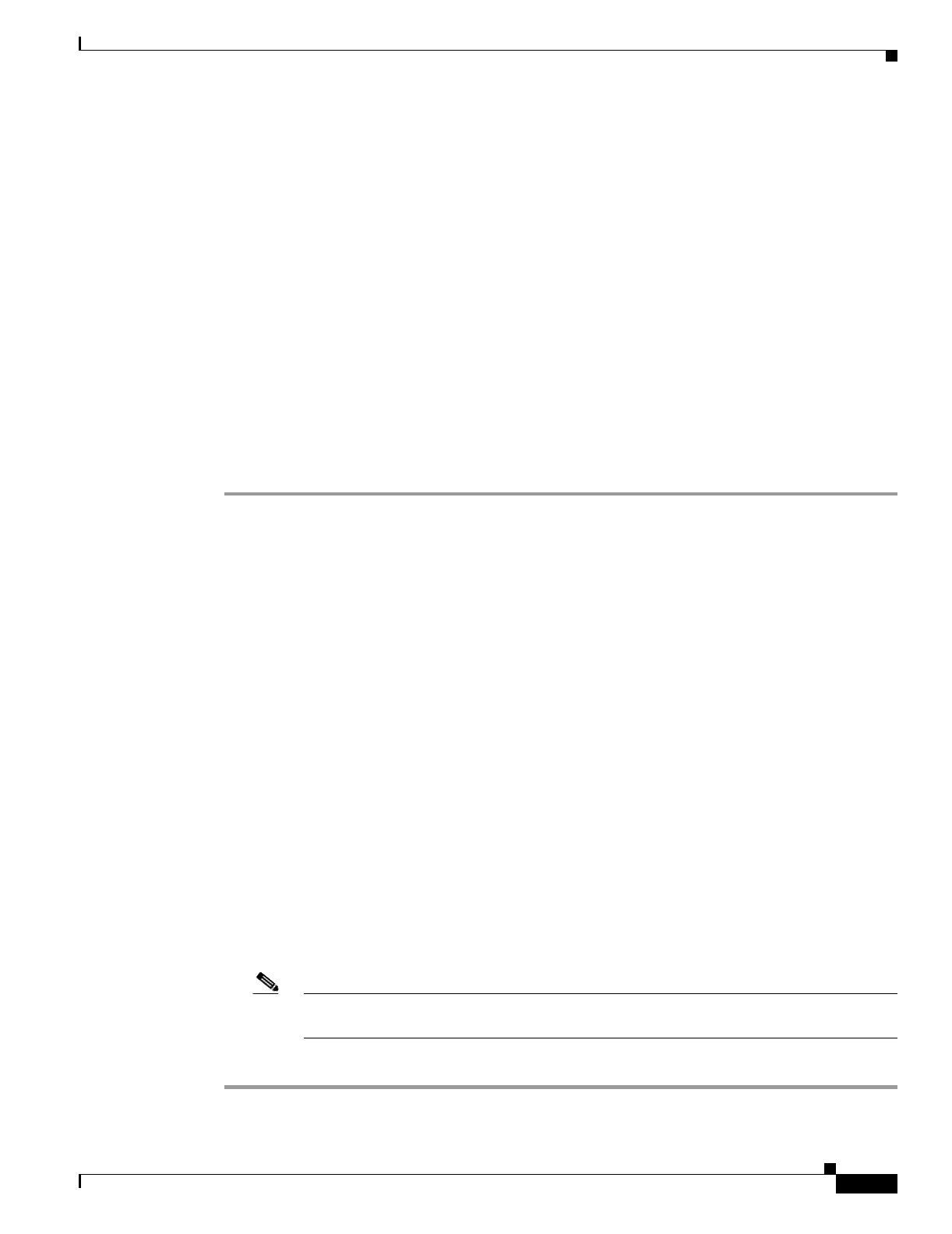21-15
Cisco Security Appliance Command Line Configuration Guide
OL-10088-01
Chapter 21 Using Modular Policy Framework
Defining Actions Using a Layer 3/4 Policy Map
inspect dns preset_dns_map
inspect ftp
inspect h323 h225
inspect h323 ras
inspect rsh
inspect rtsp
inspect esmtp
inspect sqlnet
inspect skinny
inspect sunrpc
inspect xdmcp
inspect sip
inspect netbios
inspect tftp
Adding a Layer 3/4 Policy Map
The maximum number of policy maps is 64. To create a Layer 3/4 policy map, perform the following
steps:
Step 1 Add the policy map by entering the following command:
hostname(config)# policy-map policy_map_name
The policy_map_name argument is the name of the policy map up to 40 characters in length. All types
of policy maps use the same name space, so you cannot reuse a name already used by another type of
policy map. The CLI enters policy-map configuration mode.
Step 2 (Optional) Specify a description for the policy map:
hostname(config-pmap)# description text
Step 3 Specify a previously configured Layer 3/4 class map using the following command:
hostname(config-pmap)# class class_map_name
See the “Identifying Traffic Using a Layer 3/4 Class Map” section on page 21-2 to add a class map.
Step 4 Specify one or more actions for this class map.
• IPS. See the “Diverting Traffic to the AIP SSM” section on page 22-2.
• CSC. See the “Diverting Traffic to the CSC SSM” section on page 22-11.
• TCP normalization. See the “Configuring TCP Normalization” section on page 23-1.
• TCP and UDP connection limits and timeouts, and TCP sequence number randomization. See the
“Configuring Connection Limits and Timeouts” section on page 23-4.
• QoS policing and QoS priority. See Chapter 24, “Applying QoS Policies.”
• Application inspection. See Chapter 25, “Configuring Application Layer Protocol Inspection.”
Note If there is no match default_inspection_traffic command in a class map, then at most one
inspect command is allowed to be configured under the class.
Step 5 Repeat Step 3 and Step 4 for each class map you want to include in this policy map.

